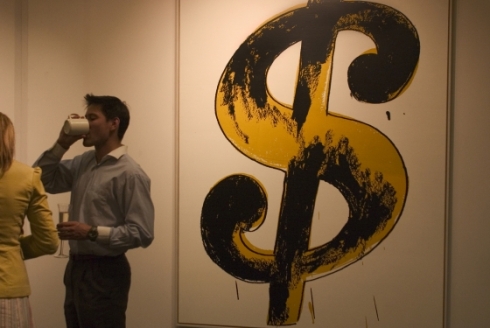You are currently browsing the category archive for the ‘Art Buying’ category.
Category Archive
Pollock Imposter
July 2, 2014 in Art Buying | Leave a comment
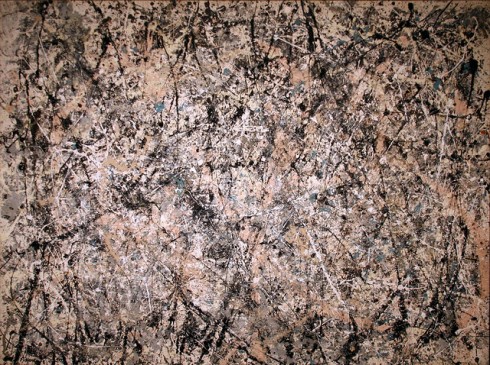
Jackson Pollock, “Number 1, 1950 (Lavender Mist)” (photo by Cliff, via Flickr)
An artist has been charged with selling $1.9 million worth of Jackson Pollock paintings, all of which turned out to be counterfeits, the New York Post reported. New York painter John Re has allegedly been deceiving collectors since 2005, telling them a complex backstory of how he stumbled upon the paintings while cleaning out the East Hampton basement of a woman whose late husband restored antiques.
One collector picked up 58 paintings for $519,890 and another bought 12 for $894,500. Upon inspection of one of the works, however, an expert noted that certain materials in the artwork did not even exist when Pollock was alive and that some of the paint was “too fresh to have been applied by Jackson Pollock, who died on August 11, 1956,” according to one report.
ABC News also reports that Re sent one collector a series of threatening emails upon learning that he had submitted numerous paintings for scrutiny by experts at the International Foundation for Art Research. Re also allegedly asked the other buyer to lend him money and also demanded that he return the fakes.
When the FBI questioned Re in May, he allegedly argued that he presented the paintings without total confirmation of their provenance; online listings, however, labelled them as “real” or “authentic” works. Regardless of how Re may have marketed the Pollocks, we at least hope he spell-checked the signatures before selling them off.
Claire Voon
Hyperallergic
Outsider Art, Inside
May 5, 2014 in Aesthetics, Art Buying | 1 comment
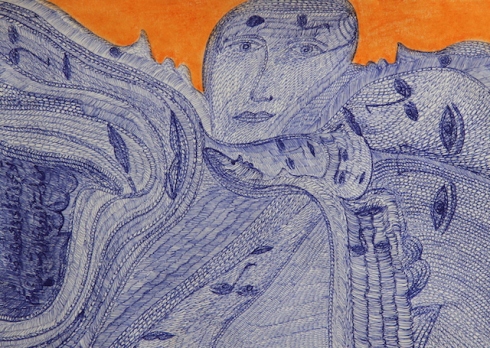 Mehrdad Rashidi, “Untitled” (circa 2009), ballpoint pen ink on found paper (courtesy of Henry Boxer Gallery, London)
Mehrdad Rashidi, “Untitled” (circa 2009), ballpoint pen ink on found paper (courtesy of Henry Boxer Gallery, London)
Has the outsider art field become a victim of its own success? If so, it is a peculiar “victim,” and its success must be measured by standards that go beyond the money-obsessed art world’s primary criterion for determining aesthetic value — the price tag that any specific work happens to sport at any given time.
“This was the year that outsider art came in from the cold,” the New York Times reported last December in a year-end, art-news summary, with late-to-the-party breathlessness. That observation packed a loaded assumption. From exactly which “cold” precincts did outsider art supposedly emerge? As the Times pointed out, offering a rationale for its assertion, outsider art had been featured “most prominently in the centerpiece exhibition of the [2013] Venice Biennale.”
That big show at the Biennale, which was titled The Encyclopedic Palace, placed outsider art right alongside the products of academically trained artists (among them: Bruce Nauman, Charles Ray, Cindy Sherman and other big-brand-name contemporaries). In fact, for a long time now, the market for the creations of the best self-taught artists has been hot, hot, hot — increasingly visible in the mainstream media, more and more popular among general-interest audiences, and, yes, ever more costly in gallery, art fair and auction sales.
Edward M. Gómez
Hyperallergic
Hopi Artifacts in Paris
April 13, 2013 in anthropology, Antiquity, Art Buying | Tags: Hopi, Native American art | Leave a comment
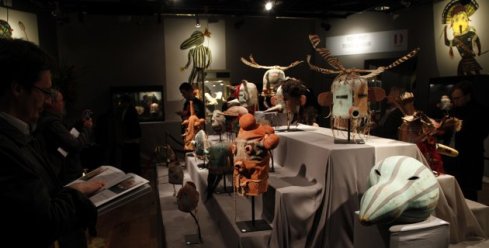
A visitor looks at antique tribal masks revered as sacred ritual artifacts by a Native American tribe in Arizona which are displayed at an auction house in Paris. (Photo: Reuters)
A contested auction of dozens of Native American tribal masks went ahead Friday afternoon following a Paris court ruling, in spite of appeals for a delay by the Hopi tribe, its supporters including actor Robert Redford, and the U.S. government.
About 2-1/2 hours after the court announced its decision, auctioneers began selling dozens of brilliantly colored masks made of wood, leather, horse hair and feathers across town at Druout auction house.
The auctioneer argued that blocking the sale would have tremendous implications and potentially force French museums to empty their collections. Arizona’s Hopi Indians want the masks returned, insisting they have a special status and are more than art — representing their dead ancestors’ spirits. Hopis feed and nurture the masks as if they are the living dead.
In its ruling, the court noted the Hopis ascribe “sacred value” to the masks but “clearly they cannot be assimilated to human bodies or elements of bodies of humans who exist or existed” — the sale of which would be banned in France.
Thomas Adamson
Yahoo
Saltz: Art Fairs Have a Purpose
December 7, 2011 in Art Buying | Tags: art, art fairs, Jerry Saltz | Leave a comment
There’s little doubt that the art world still seems like it’s barreling off a massive binging spendthrift cliff. The art-buying behavior of the super-rich and the merely wealthy, coupled with obscene prices paid for a more or less preapproved group of around 75 celebrity artists, seems less and less relevant – and more odious. Yet art fairs, insane as they are, are still ways for artists and art dealers to maybe make money; gallerists to create connections with one another; newer dealers to heighten their profiles; the general public to see art outside a museum; and the art tribe to have a giant sleepover, stay up late together, and (as I often say) touch antennae.
Jerry Saltz
New York Magazine
LA Art Leakage
October 28, 2010 in Art Buying | Tags: Denn, Dennis Hopper, Los Angels art, Max Palevsky, Robert Shapazian | Leave a comment
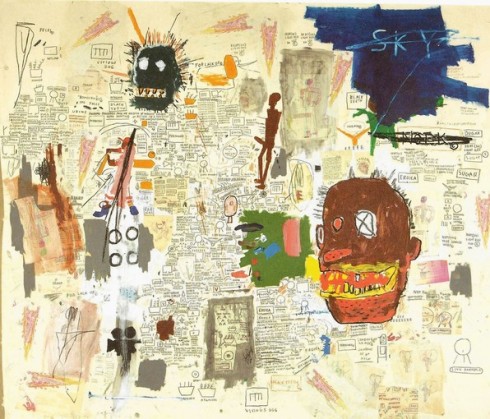
Basquiat’s untitled mixed-media work, owned by Dennis Hopper. (Christie’s / October 24, 2010)
This year, Los Angeles has lost three of its leading art collectors, as actor Dennis Hopper, gallery director Robert Shapazian and computer pioneer Max Palevsky all died within two months of each other. Now, the city is poised to lose the bulk of their collections as well, as Christie’s is selling some 350 artworks from their estates starting this week.
Expected to bring close to $100 million, these artworks are sure to be dispersed to buyers across the country and beyond. Some of the most prized pieces, slated for Christie’s big contemporary sale Nov. 10, include a 1987 Basquiat painting owned by Hopper, which the auction house estimated will sell for $5 million to $7 million; Roy Lichtenstein’s 1964 “Girl in Mirror” from Palevsky, estimated at $3 million to $4 million; and Andy Warhol’s 1962 “Campbell’s Soup Can (Tomato)” from Shapazian, estimated at $6 million to $8 million.
In the trade, these kinds of historically important works are called museum pieces. But they have not been bequeathed to Los Angeles museums, which depend heavily on such gifts for their growth.
Jori Finkel
Los Angeles Times
Art (Not) Walk?
September 30, 2010 in Art Buying | Tags: art, Art Walk, Los Angeles | 1 comment
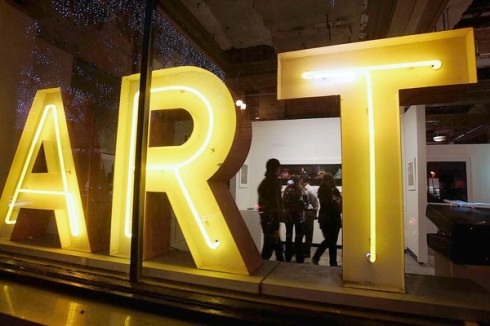
The monthly art walks in downtown L.A. are hugely popular, but organizers don’t have the money to pay for extra security and cleanup. (Spencer Weiner, Los Angeles Times
The future of the Downtown Art Walk, which draws more than 20,000 people to a monthly stroll of downtown galleries and nightspots and has been credited with helping revitalize the area, was uncertain Tuesday following a dispute among its top leaders.
The dispute broke out Friday with a message on the art walk’s official website saying the walks had been canceled through the end of the year and that they would resume in 2011 as quarterly events. But then on Sunday, the organization’s board of directors sent out a release saying that the next art walk would take place Oct. 14 as previously scheduled and that the group’s executive director, Jay Lopez, had published the earlier announcement without the approval of the board.
David Ng and Deborah Vankin
Los Angeles Times
Ansel Adams?
July 30, 2010 in Aesthetics, Art Buying | Tags: Ansel Adams, art, Photography | Leave a comment
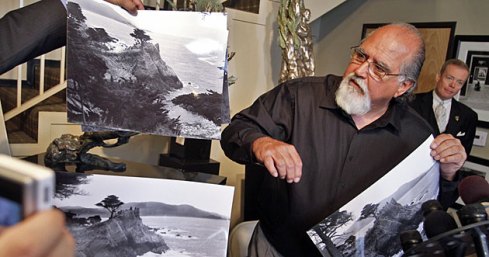
Rick Norsigian unveils the prints made from a stash of negatives he bought in a garage sale that several appraisers say is the work of Ansel Adams. (Lawrence K. Ho / Los Angeles Times)
A wall painter for the Fresno school district who bought a cache of antique glass-plate photographic negatives at a garage sale 10 years ago laid out his case Tuesday that they were created by Ansel Adams early in his career, offering affirmations from photographic and forensic experts he had hired.
In a Beverly Hills gallery packed with reporters and photographers, Rick Norsigian and the Beverly Hills law firm that is helping him market prints made from the negatives (and promote a documentary about his find) said the negatives of Yosemite, the San Francisco waterfront, and Carmel’s mission and nearby Point Lobos were taken by Adams from 1919 to the 1930s, before he became famous as the visual bard of America’s natural landscape.
Mike Boehm
Los Angeles Times
Diversity in the Art World
June 19, 2010 in Art Buying, The "Art World" | Tags: art, Art Basel, gender bias in art, Lindsay Pollock | Leave a comment
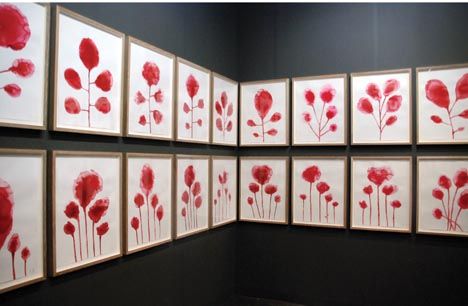
This major work by Louise Bourgeois was one of the exceptions
A list of the artists whose work you are most likely to see at this year’s Art Basel, based on the number of galleries who are bringing pieces, is headed—perhaps unsurprisingly—by the prolific Andy Warhol, with works on show at 28 stands. Artists making work in the first half of the 20th century rank highly, including Alexander Calder and Pablo Picasso, although the list is also speckled with 1960s conceptualists such as Sol LeWitt and Lawrence Weiner. But the top 40 most represented artists on show at the fair are all men
Lindsay Pollack
The Art Newspaper
Art Auction Update
May 30, 2010 in Art Buying | Tags: art, art auctions, Urs Fischer | Leave a comment
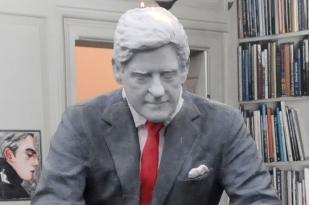
Collector Peter Brant in wax by Swiss artist Urs Fischer
Sometimes in the art world, it’s money that matters, and this is one of those times. While the New York auctions raised triple the amount at a similar set of sales six months ago, to some degree the well-choreographed evenings just obscured what was really going on. Sales at the city’s 300-plus art galleries are actually still flagging, and a shakeout is going on over which artists matter and who will make it into the art-history books. The shakeout is amplifying the power of the relatively tiny cabal of people who do keep buying at the highest levels, and it’s shifting who and what people are paying attention to.
This season, it wasn’t so much who sold well, but which artists, schools and movements surprisingly weren’t on the block at all because the auctioneers didn’t even know if there was a market for them anymore. Buyers and sellers are so confused about the ultimate art-historical importance of such recently “superhot”movements as the Leipzig School (Germany), Chinese Contemporary Art (Beijing) and the so-called Young British Artists (London) that auction houses offered work from virtually none of them. A safer bet was to offer works by artists like Mr. Fischer, for example, because of his powerful fans and because he’s just a few months away from an well-recieved retrospective at the New Museum.
Alexandra Peers
New York Observer
Russian Art: Next Bubble?
April 27, 2010 in Art Buying | Tags: art, Natalia Goncharova, painting, Russian art | Leave a comment
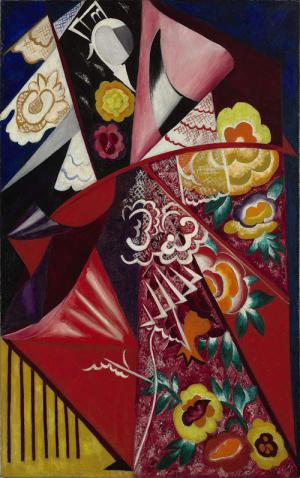
Natalia Goncharova, who died in 1962, was already the highest selling female artist at auction when Espagnole, painted during the First World War, sold in February for £6.4m. It beat her previous record of £5.5m set for Les Fleurs, sold in 2008 (Photo: Christie’s)
The Russians are coming. The multi-million pound herd of buyers who stampede around the world in pursuit of the art market’s “next big thing” is rushing this weekend to buy into what they hope will be the latest bubble: Russian art
Auctioneers in Manhattan shifted more than 600 works from the former Soviet Union in just two days of what is being described as a “Russian tidal wave”.
The surge is partly thanks to the economic downturn which has seen the volume of work sold by the relatively cheaper artists soar.
Andrew Johnson
The Independent

